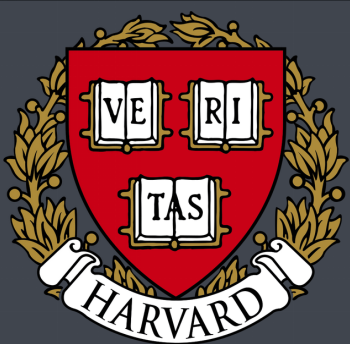哈佛大学电子工程科研
来源:哈鲁教育 2018-07-05
哈佛大学电子工程科研

科研时间:
6月1日--9月1日,每期时间长度为3—4周;
(针对假期只有3周的学生,可选3周实地+1周远程,确保科研收获)
面向对象:
以计划申请美国名校电子工程类相关专业的大学生为主
科研主题:
photonic crystals, one-dimensional photonic crystals, Photonic band gap, etc.
科研概述:
光子晶体是指具有光子带隙(PhotonicBand-Gap,简称为PBG)特性的人造周期性电介质结构,有时也称为PBG光子晶体结构。所谓的光子带隙是指某一频率范围的波不能在此周期性结构中传播,即这种结构本身存在“禁带”。
光子晶体(Photonic Crystal)是在1987年由S.John和E.Yablonovitch分别独立提出,是由不同折射率的介质周期性排列而成的人工微结构。光子晶体即光子禁带材料,从材料结构上看,光子晶体是一类在光学尺度上具有周期性介电结构的人工设计和制造的晶体。与半导体晶格对电子波函数的调制相类似,光子带隙材料能够调制具有相应波长的电磁波---当电磁波在光子带隙材料中传播时,由于存在布拉格散射而受到调制,电磁波能量形成能带结构。能带与能带之间出现带隙,即光子带隙。所具能量处在光子带隙内的光子,不能进入该晶体。光子晶体和半导体在基本模型和研究思路上有许多相似之处,原则上人们可以通过设计和制造光子晶体及其器件,达到控制光子运动的目的。光子晶体(又称光子禁带材料)的出现,使人们操纵和控制光子的梦想成为可能。

科研计划:
In recent years, artificial optical materials and structures enabled the observation of various new optical effects and experiments. For example, photonic crystals are able to inhibit the propagation of certain light frequencies and provide the unique ability to guide light around very tight bends and along narrow channels. On the other hand, the high field strengths in optical microresonators lead to nonlinear optical effects that are important for future integrated optical networks. This chapter explains the basic underlying principles of these novel optical structures. For a more detailed overview the reader is referred to review articles and books listed in the references.
Session 1: Introduction to photonic crystals
SEPT1: Photonic crystals are a marriage of solid-state physics and electromagnetism. Crystal structures are citizens of solid-state physics, but in photonic crystals the electrons are replaced by electromagnetic waves. Accordingly, we present the basic concepts of both subjects before launching into an analysis of photonic crystals.
Session2: Basic concepts
SEPT 2: presents some basic concepts of solid-state physics and symmetry theory as they apply to photonic crystals. It is common to apply symmetry arguments to understand the propagation of electrons in a periodic crystal potential. Similar arguments also apply to the case of light propagating in a photonic crystal. We examine the consequences of translational, rotational, mirror-reflection, inversion, and time-reversal symmetries in photonic crystals, while introducing some terminology from solid-state physics.
Session3: Introduction to one-dimensional photonic crystals
SEPT 3: To develop the basic notions underlying photonic crystals, we begin by reviewing the properties of one-dimensional photonic crystals. we will see that one-dimensional systems can exhibit three important phenomena: photonic band gaps, localized modes, and surface states. Because the index contrast is only along one direction, the band gaps and the bound states are limited to that direction. Nevertheless, this simple and traditional system illustrates most of the physical features of the more complex two- and three-dimensional photonic crystals, and can even exhibit unidirectional reflection.
Session4: Introduction to two-dimensional photonic crystals
SEPT 4: In this session, we discuss the properties of two-dimensional photonic crystals, which are periodic in two directions and homogeneous in the third. These systems can have a photonic band gap in the plane of periodicity. By analyzing field patterns of some electromagnetic modes in different crystals, we gain insight into the nature of band gaps in complex periodic media. We will see that defects in such two-dimensional crystals can localize modes in the plane, and that the faces
of the crystal can support surface states.
Session5: Introduction to three-dimensional photonic crystals
SEPT 5: addresses three-dimensional photonic crystals, which are periodic along three axes. It is a remarkable fact that such a system can have a complete photonic band gap, so that no propagating states are allowed in any direction in the crystal. The discovery of particular dielectric structures that possess a complete photonic band gap was one of the most important achievements in this field. These crystals are sufficiently complex to allow localization of light at point defects and propagation along linear defects.
Session6: Photonic band gap
SEPT 6: Many periodic-waveguide structures are possible. It will turn out that, regardless of the geometry, all such structures exhibit common phenomena: they have a form of photonic band gap along their periodic direction, and can confine light in the other directions by the principle of index guiding
Session7: Design of two-dimension a photonic crystals
SEPT 7: The session will examine different forms of such hybrid systems, all of which use a combination of periodicity and other mechanisms to confine light in three dimensions session will look at periodic planar waveguides known as photonic-crystal slabs, which use two-dimensional periodicity combined with vertical index-guiding.
Session8: Lumerical FDTD
SEPT8: Lumerical FDTD is an important research tool for designing photonic crystals. Employing the industry-proven finite-difference time-domain (FDTD) method, FDTD Solutions empowers device and components designers to confront challenging optical design problems. Rapid prototyping and highly-accurate simulations reduce reliance upon costly experimental prototypes, leading to quicker assessment of design concepts and reduced product development costs.
Session9: Design of three-dimension a photonic crystals
SEPT9: The session will examine different forms of such hybrid systems, all of which use a combination of periodicity and other mechanisms to confine light in three dimension session will look at periodic planar waveguides known as photonic-crystal slabs, which use two-dimensional periodicity combined with vertical index-guiding.
Session10: Designing Photonic Crystals for Applications I
SEPT10: We have expended a great deal of effort to understand the different ways in which photonic crystals can reflect and trap light, thereby forming mirrors, waveguides, and resonant cavities. These three components are themselves very useful, especially because they can have unusual properties that are not shared by their predecessors made from unstructured materials. Now, however, we will examine some useful ways in which these components can be combined. We will see that there are simple universal behaviors that result from such combinations, regardless of the specific geometric structure, which are captured by the formalism of temporal coupled-mode theory. This allows us to design devices easily from first principles, and only afterwards determine the quantitative details from a small number of variables: the symmetries, frequencies, and decay rates of the resonant cavities. We will provide examples of filters, which only transmit light within a specified frequency band; bends, which guide light around a sharp corner; and splitters, which divide a waveguide into two. Finally, we will consider further the applications of nonlinear materials.
Session11: Designing Photonic Crystals for Applications II
SEPT11: With a suitable nonlinear material, the photonic-crystal filter can act asan optical “transistor.”For simplicity, most of our examples will be drawn from two dimension a systems. The ideas generalize easily to the cases of one- and three-dimensional dealing with the impact of losses on device performance; for this purpose we will consider hybrid structures such as those of chapter 7, where radioactive losses inevitably arise for resonant cavities.
科研亮点:
1. 进入美国名校实验室/科研组,接触尖端科学
科研经历是美国名校申请的基石,顶级名校的科研项目是对学生有能力完成名校学业最好的证明。
2. 师从导师开展实验/科研
高层次的人脉和校友关系,与学生为伍的人是诺贝尔奖获得者、美国科学院院士、教授、名校博士、硕士,学生将体验到世界最顶级学术专家们的思想和气质。
3. 获得导师推荐信和科研证书
学生在科研结束时可以获得名校导师的推荐信,大大助力未来的留学申请。
4. 全天候专业英语环境,迅速提升专业水平
提升沟通和专业英语水平,提升专业知识和能力,用实践使学生的理论知识更加具体形象。5. 高含金量收获助力未来留学深造及就业
在名校导师指导下的科研过程将帮助学生明确自身发展方向,不断深化对于美国学界的了解与认同,帮助参与学生及家长明确未来的学校及专业申请方向;从而更好的明确留学的目的与意义,摆脱盲目,获得真知。
科研收获:
1. 科研完成时,学生将会全面了解物理光学&电子工程领域基本知识和最新进展。
2. 挑战自身潜能,切身体会哈佛大学顶尖科研环境,在严苛的训练下快速成长。
3. 极大拓宽视野,实地感受国内外科研区别。通过此次科研,参与学生将会对留学名校有个清晰的认识,并依此做出最优的人生规划。
4. 学生将有机会与顶尖教授零距离交流套磁,了解哈佛的内部申请信息。
咨询方式:
拨打全国免费热线400-6652-485进行咨询;
或者微信关注“哈鲁留学”公众号,留言【背景提升+姓名+电话+学校年级专业】,即可免费报名咨询!




